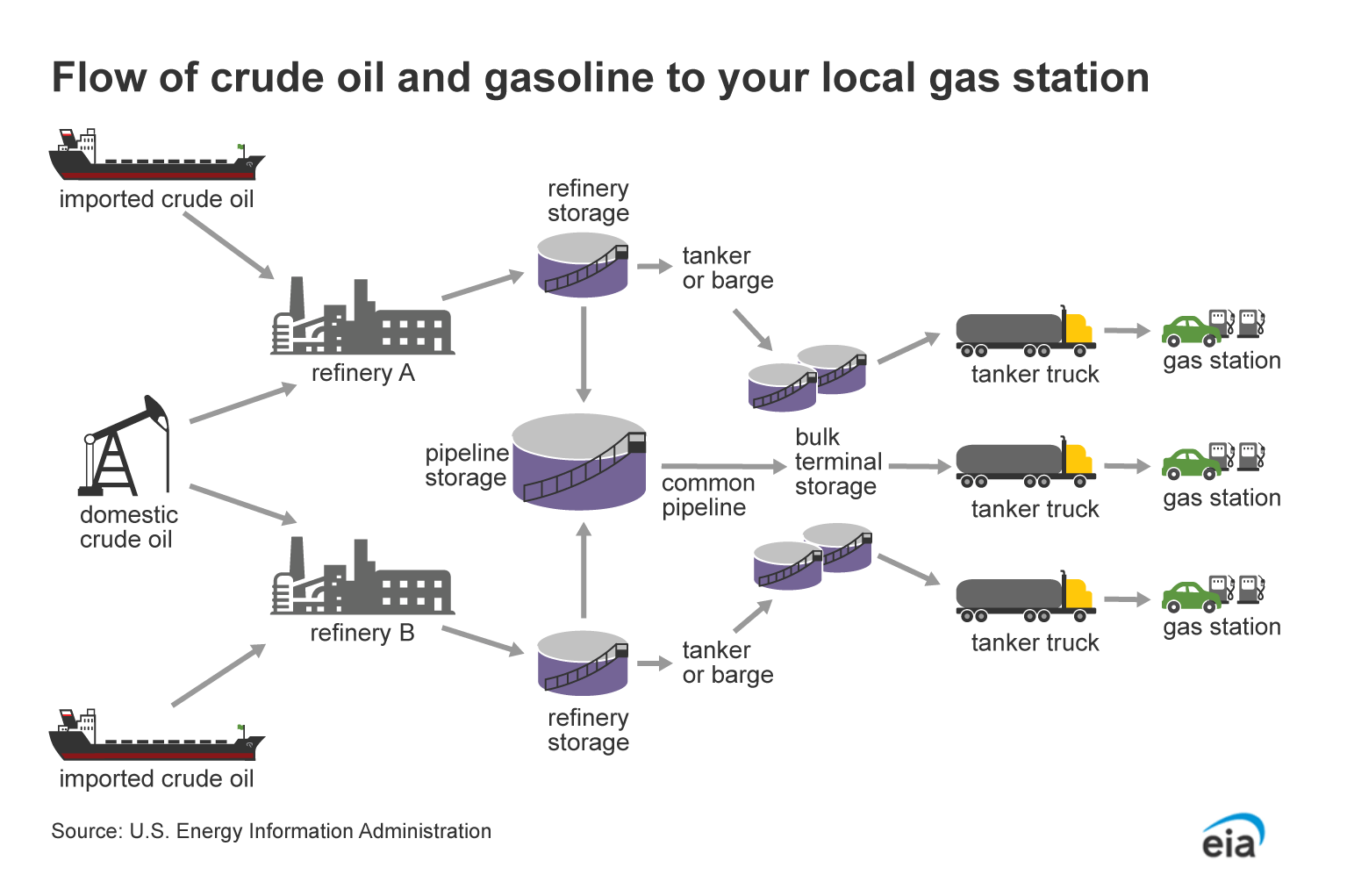Can consumers find out where the gasoline at a gasoline fueling station comes from?
EIA cannot identify the exact origin of gasoline sold at fueling stations because of the stages and processes involved in producing gasoline and delivering it to retail fueling stations. Gasoline begins its journey to consumers as crude oil at petroleum refineries and then moves through stages of refining, transport, storage, and blending until final delivery to retail fueling stations.
Acquiring crude oil
U.S. petroleum refineries make gasoline (and other petroleum products) from crude oil and other liquids that are produced in the United States or imported from other countries. The specific sources of the crude oil and other liquids used at refineries may vary. Most U.S. refiners use a mix of crude oils from various domestic and foreign sources. The mix of crude oils can change based on the relative cost and availability of crude oil from those sources.
Refining oil into gasoline
At petroleum refineries, crude oil is broken into its various components, which are then selectively reconfigured into new products. U.S. refineries generally focus on producing gasoline to meet U.S. market demand, and they produce nearly all of the gasoline sold in the United States.
Moving gasoline from refineries to storage terminals
Most gasoline moves from refineries through pipelines to large storage terminals near consuming areas. Gasoline and other petroleum products from different refineries are often sent through shared pipelines in batches. These batches are not physically separated in pipelines and some mixing, or commingling, of products occurs. Because of this mixing, the gasoline and other products must be tested as they leave pipelines to see if they meet required specifications. If a product fails to meet local, state, or federal specifications, it is sent back to a refinery for additional processing.
Finishing gasoline at blending terminals
Gasoline is usually sent by tanker truck from the large storage terminals to smaller blending terminals, where it is processed into finished motor gasoline. These smaller terminals are typically where fuel ethanol is blended into gasoline.
Importing gasoline
The United States imports both finished motor gasoline and gasoline blending components from various countries, mainly into the East and West Coasts, when it is less expansive or faster to obtain from other countries than from domestic suppliers.
Delivering gasoline to fueling stations
Tanker trucks deliver the finished motor gasoline from blending terminals to more than 100,000 retail outlets across the United States. Different companies that own service stations in the same area may purchase their gasoline at the same bulk storage and distribution terminal. Many of the stations are unbranded dealers that sell gasoline produced by different companies, and branded stations may not necessarily sell the gasoline their companies produce. The only difference between the gasoline at one company's fueling stations and another company’s stations is the small amount of additives they might have blended into gasoline before delivery to their fueling stations.
Last updated: February 22, 2023

